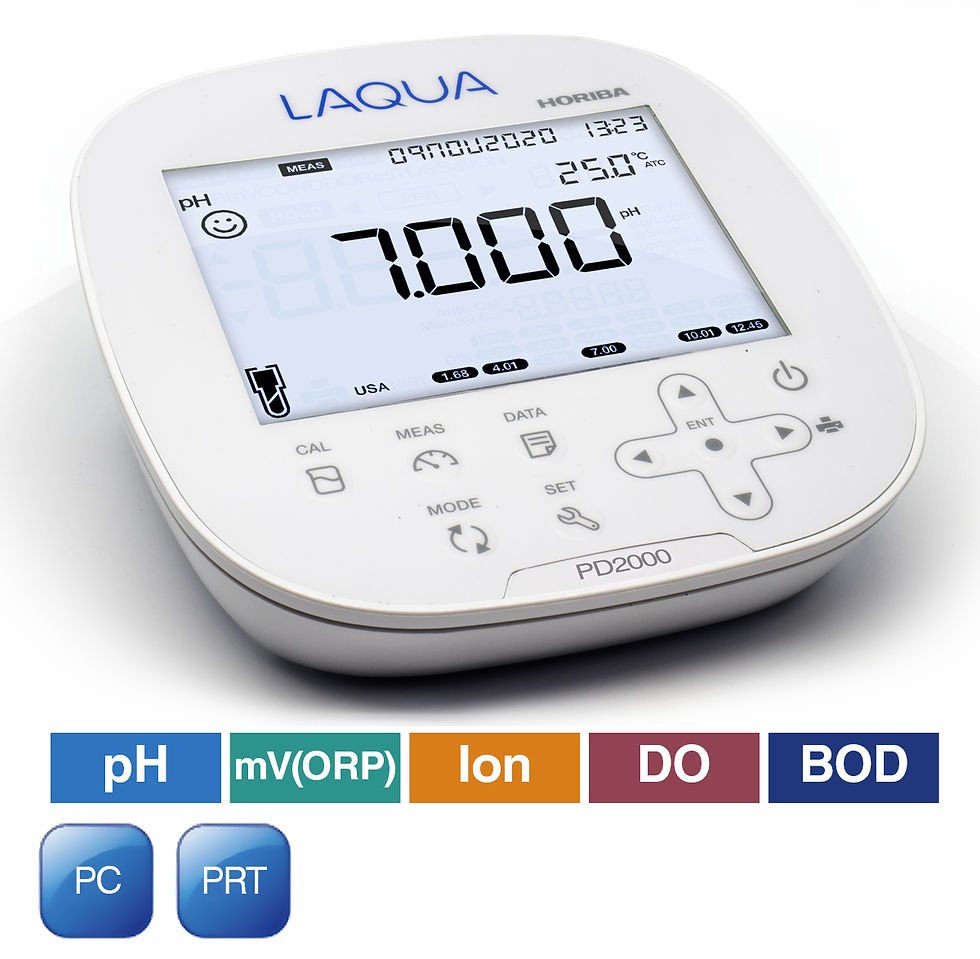Chemical Oxygen Demand (COD) and Biochemical Oxygen Demand (BOD) analyzers provide real-time data on the organic load of wastewater. These analyzers help treatment plant operators make adjustments to the treatment process to ensure compliance with regulatory requirements and optimize process control.

The image above shows a pH, temperature, DO and BOD meter made by Horiba.
COD analyzers measure the amount of oxygen required to chemically oxidize organic and inorganic compounds in wastewater. This method provides a measure of the total organic load present in the sample, including biodegradable and non-biodegradable compounds.
COD analyzers typically use chemical reagents, such as potassium dichromate or potassium permanganate, to oxidize organic matter in the sample. The amount of reagent consumed is proportional to the COD concentration, which is then quantified using colorimetric or titrimetric methods.
COD analyzers offer rapid analysis and are well-suited for process control and monitoring of organic pollutants in wastewater. However, they do not provide information on specific organic compounds present in the sample.
BOD analyzers measure the amount of oxygen consumed by microorganisms during the biochemical oxidation of organic matter in wastewater over a specified period, typically five days at 20°C (BOD₅). BOD testing assesses the biodegradable organic content and oxygen demand of the wastewater.
BOD analyzers consist of sealed bottles containing diluted wastewater samples inoculated with a seed culture of microorganisms. The bottles are incubated for five days at a controlled temperature, and the decrease in dissolved oxygen in the sample is measured using a dissolved oxygen probe.
BOD testing provides valuable information on the biodegradability of organic pollutants in wastewater and the efficacy of biological treatment processes. However, BOD analysis is time-consuming, requires specialized equipment, and is subject to variability due to factors such as temperature and microbial activity.
These analyzers provide accurate and timely data on effluent quality, facilitating process optimization, regulatory compliance, and environmental protection.
Comentarios